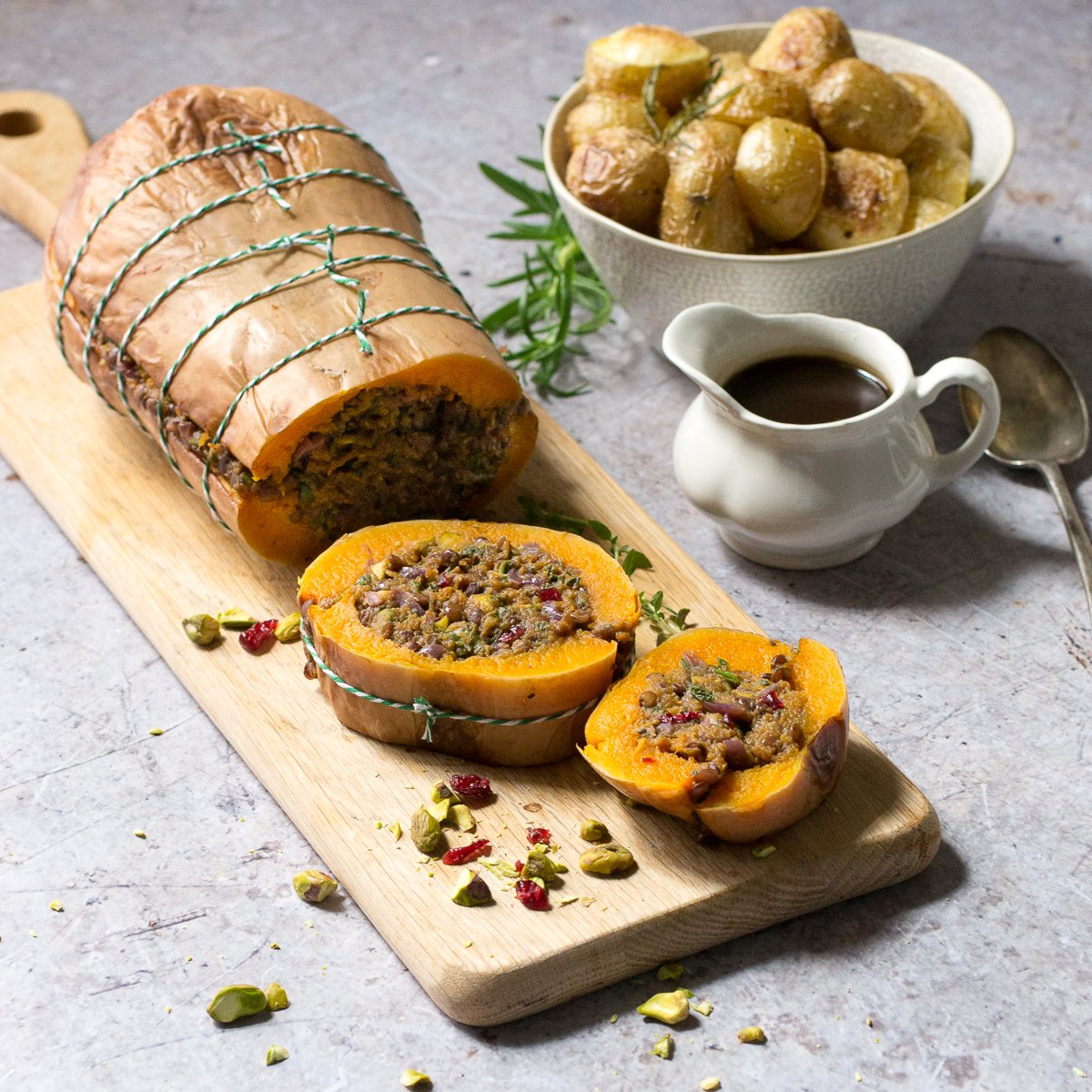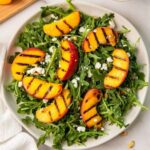Imagine a holiday table brimming with vibrant colors and tantalizing aromas, where every guest finds a dish that delights their palate and respects their dietary needs. This isn’t a dream; it’s the reality of a flexitarian holiday feast. This guide will walk you through crafting a menu that seamlessly blends vegetarian, vegan, and meat-inclusive options, ensuring a celebration of flavors and inclusivity. From selecting recipes and adapting them to suit various preferences to creating a visually stunning table setting, we’ll cover every aspect of hosting a memorable and delicious flexitarian feast.
We’ll explore creative recipe choices, offering detailed instructions and helpful substitutions to cater to common dietary restrictions, including vegan, vegetarian, gluten-free, and allergy-conscious options. Learn to master the art of efficient cooking, ensuring all dishes are perfectly timed and beautifully presented. The result? A holiday celebration that’s as satisfying for the eyes as it is for the stomach, leaving your guests feeling nourished, happy, and impressed.
Planning Your Flexitarian Holiday Feast Menu
Crafting a flexitarian holiday menu is all about creating a delicious and inclusive spread that caters to a variety of dietary needs and preferences, without sacrificing festive flair. The key is to offer a balanced selection of vegetarian, vegan, and meat-inclusive dishes, ensuring everyone feels satisfied and included in the celebration. This approach allows for flexibility and minimizes food waste, making it a practical and thoughtful choice for any holiday gathering.
A Sample Flexitarian Holiday Feast Menu
This sample menu demonstrates a balanced approach, offering options for various dietary restrictions and preferences. It’s designed to be visually appealing and delicious, providing a satisfying culinary experience for all guests. Serving sizes are approximate and can be adjusted based on the number of guests. Substitutions are suggested to offer further flexibility.
| Dish Name | Description | Dietary Notes | Serving Size |
|---|---|---|---|
| Roasted Turkey Breast with Cranberry-Orange Glaze | Succulent roasted turkey breast, glistening with a vibrant cranberry-orange glaze, offering a classic holiday centerpiece. | Contains meat. | 6-8 servings |
| Butternut Squash and Sage Risotto | Creamy risotto infused with the earthy sweetness of butternut squash and aromatic sage, offering a rich and comforting vegetarian option. | Vegetarian. Can be made vegan by substituting vegetable broth for chicken broth and using vegan parmesan cheese. | 8-10 servings |
| Mushroom Wellington with Red Wine Reduction | A show-stopping vegetarian main course featuring a savory mushroom duxelles encased in flaky puff pastry, served with a rich red wine reduction. | Vegetarian. Can be made vegan by using vegan puff pastry and ensuring the duxelles contains no dairy or egg. | 6-8 servings |
| Roasted Brussels Sprouts with Maple-Dijon Glaze | Perfectly roasted Brussels sprouts, caramelized to perfection with a tangy maple-dijon glaze, offering a delicious and festive side dish. | Vegan, Vegetarian. | 6-8 servings |
| Cranberry Sauce with Orange Zest | A classic holiday side dish, featuring tart cranberries brightened with the zest of fresh oranges, providing a sweet and tart counterpoint to richer dishes. | Vegan, Vegetarian. | 8-10 servings |
| Vegan Chocolate Avocado Mousse | A decadent and surprisingly healthy dessert, featuring creamy avocado blended with rich cocoa powder and a touch of maple syrup. | Vegan, Vegetarian. | 6-8 servings |
Rationale for Menu Selection
The menu’s design prioritizes a balance between familiar holiday flavors and diverse dietary options. The roasted turkey breast provides a traditional centerpiece for meat-eaters, while the butternut squash risotto and mushroom wellington offer substantial and flavorful vegetarian alternatives. The inclusion of vegan options like the chocolate avocado mousse and the easily adaptable risotto and wellington ensures that guests with vegan preferences are well catered for. The sides, such as roasted Brussels sprouts and cranberry sauce, are naturally versatile and adaptable to various dietary needs. This combination ensures a celebratory and inclusive feast for all guests.
Recipe Selection and Adaptation
Crafting a flexitarian holiday feast requires careful consideration of both vegetarian and meat-inclusive options, ensuring a satisfying and diverse culinary experience for all guests. This involves selecting recipes that are not only delicious but also adaptable to various dietary needs and preferences, offering flexibility without compromising on flavor or presentation.
Vegetarian Main Course Recipes
The cornerstone of a successful flexitarian feast lies in the main course. Offering compelling vegetarian options is crucial to ensure everyone feels included and satisfied. Here are three distinct and visually appealing vegetarian main courses perfect for a holiday celebration:
- Butternut Squash and Sage Lasagna: Imagine layers of tender butternut squash, fragrant sage, creamy ricotta cheese (easily substituted with vegan ricotta for vegan guests), and perfectly cooked lasagna sheets, all baked to golden perfection. The vibrant orange of the squash contrasts beautifully with the deep green of the sage, creating a visually stunning dish. Each bite offers a harmonious blend of sweet, savory, and earthy flavors. Preparation involves roasting the butternut squash until tender, then layering it with the ricotta (or vegan alternative), sage, and lasagna sheets in a baking dish. The lasagna is then baked until bubbly and golden brown, resulting in a comforting and satisfying main course.
- Mushroom Wellington: This elegant vegetarian centerpiece showcases the earthy richness of mushrooms. Picture a flaky, golden-brown pastry crust encasing a savory mixture of sautéed mushrooms, herbs, and perhaps some lentils or chestnuts for added texture. The Wellington’s impressive presentation makes it a showstopper for any holiday gathering. The recipe begins with finely chopping and sautéing a variety of mushrooms (cremini, shiitake, oyster) until tender. These are then combined with herbs (thyme, rosemary), shallots, and a rich gravy or sauce. The mixture is shaped into a log, wrapped in puff pastry, and baked until the pastry is golden and crisp. A vegan puff pastry can easily be substituted.
- Roasted Vegetable Tart with Goat Cheese: A colorful and flavorful tart, featuring a medley of roasted root vegetables like carrots, parsnips, and sweet potatoes, arranged artfully on a buttery crust and topped with creamy goat cheese. The vibrant colors of the roasted vegetables create a visually appealing centerpiece. For a vegan option, substitute the goat cheese with a vegan cream cheese or cashew cream. The vegetables are first roasted until tender and slightly caramelized, bringing out their natural sweetness. They are then arranged on a pre-made or homemade tart crust, topped with the goat cheese (or vegan alternative), and baked until the crust is golden and the cheese is melted and slightly browned. A sprinkle of fresh herbs adds a final touch of elegance.
Flavorful Side Dish Recipes
Equally important to the main course are complementary side dishes that enhance the overall dining experience. These recipes should cater to a range of dietary needs, providing options for both meat-eaters and vegetarians, as well as those with vegan or gluten-free requirements.
- Roasted Brussels Sprouts with Balsamic Glaze: Imagine perfectly roasted Brussels sprouts, their leaves slightly charred and caramelized, glistening with a tangy balsamic glaze. The combination of sweet and slightly bitter Brussels sprouts with the sharp balsamic creates a delightful contrast of flavors and textures. For gluten-free guests, ensure your balsamic glaze does not contain any gluten-based thickeners. Vegan guests can enjoy this dish as is.
- Cranberry Sauce with Orange Zest: A classic holiday side, elevated with the bright citrus notes of orange zest. Picture a vibrant crimson sauce, studded with glistening orange zest, offering a sweet and tart counterpoint to richer dishes. This recipe is naturally vegan and gluten-free.
- Garlic and Herb Mashed Potatoes (Adaptable for various diets): Creamy mashed potatoes, infused with the aromatic flavors of garlic and herbs, are a holiday staple. For vegan guests, use plant-based milk and butter alternatives. For gluten-free guests, ensure that any added seasonings or thickeners are gluten-free. The creamy texture and comforting flavor make this a crowd-pleaser.
Adapting Existing Recipes for a Flexitarian Approach
Many traditional holiday recipes can be easily adapted to fit a flexitarian approach. The key is strategic substitution and modification. For example, a meat-heavy casserole can be transformed by reducing the meat content and increasing the proportion of vegetables. Meat stocks can be replaced with vegetable stocks, and cream sauces can be lightened by using less cream or incorporating vegetable purees. Gluten-free alternatives, such as gluten-free flour blends or cornstarch, can be used to adapt recipes for those with gluten sensitivities. Similarly, dairy products can be replaced with plant-based alternatives, allowing for vegan adaptations of many traditional dishes. Careful planning and mindful ingredient substitutions are key to creating a truly inclusive and satisfying flexitarian holiday feast.
Step-by-Step Cooking Guide

A well-orchestrated holiday feast requires careful planning and execution. This guide details the preparation and cooking timeline for a delicious flexitarian menu, ensuring all dishes are served hot and fresh simultaneously. We’ll focus on efficient time management and temperature control to achieve a seamless culinary experience.
Timeline and Preparation Order
This section Artikels the order of preparation to maximize efficiency and minimize stress. A staggered approach, beginning with dishes requiring longer cooking times, ensures everything is ready when needed.
- Early Morning (8:00 AM – 10:00 AM): Begin with preparations for the roasted root vegetables. Peel, chop, and toss them with olive oil, herbs, and spices. This allows the flavors to meld and the vegetables to soften slightly before roasting.
- Mid-Morning (10:00 AM – 12:00 PM): Prepare the stuffing. Sauté the vegetables and herbs, then combine with bread cubes, broth, and seasonings. This can be made ahead and stored, reducing cooking time later.
- Afternoon (12:00 PM – 2:00 PM): Prepare the main course components. If using a vegetarian main, assemble the components (e.g., layering vegetables for a gratin). If including meat, now is the time to season and prepare it for roasting.
Cooking the Feast
This section details the cooking process, emphasizing simultaneous cooking to optimize time.
- Preheat Ovens (2:00 PM): Preheat ovens to their respective temperatures – typically 400°F (200°C) for roasting vegetables and meat, and 350°F (175°C) for the stuffing. Ensure adequate oven space for all dishes.
- Roasting (2:30 PM – 4:30 PM): Place the root vegetables and the main course (meat or vegetarian alternative) into the preheated oven. Roasting times vary based on the ingredients and size, but generally, vegetables will take 45-60 minutes and a roast 1.5-2 hours. Use a meat thermometer for meat dishes to ensure they reach the safe internal temperature.
- Stuffing (3:30 PM – 4:30 PM): Place the prepared stuffing into a separate oven-safe dish and bake alongside the other items. This ensures the stuffing is warm and ready to serve when the main course is finished. The lower temperature for the stuffing prevents it from drying out.
Plating and Serving
The final step is to present the feast beautifully.
“A well-presented meal enhances the dining experience.”
- Resting (4:30 PM – 5:00 PM): Allow the roasted meat (if applicable) to rest for 10-15 minutes before carving. This allows the juices to redistribute, resulting in a more tender and flavorful dish.
- Plating (5:00 PM): Arrange the dishes attractively on serving platters. Consider color and texture contrasts for visual appeal. Place the main course in the center, surrounded by the roasted vegetables and stuffing.
- Serving (5:30 PM): Serve immediately while the dishes are hot and fresh. Garnish with fresh herbs for an added touch of elegance.
Presentation and Serving Suggestions
Transforming your flexitarian feast from a delicious meal into a truly memorable experience hinges on artful presentation and thoughtful serving suggestions. The visual appeal of your dishes, combined with a carefully curated table setting, will elevate the entire dining experience, creating a warm and inviting atmosphere for your guests. The goal is to create a cohesive and aesthetically pleasing presentation that reflects the delicious and diverse flavors of your menu.
A thoughtfully designed tablescape sets the stage for a memorable meal. Imagine a table adorned with a crisp, white linen tablecloth, its texture subtly contrasting with the smooth, warm gleam of polished wooden chargers. Deep burgundy napkins, folded into elegant fans, add a touch of festive richness, echoed by the deep crimson hues of the wine glasses. Subtle gold accents, perhaps in the silverware or candleholders, introduce a touch of elegance without overwhelming the overall palette. Scattered across the table are sprigs of rosemary and cranberries, their vibrant colors and natural textures providing a visually appealing counterpoint to the formal setting. The centerpiece could be a low, rustic arrangement of seasonal fruits and vegetables, their natural beauty enhancing the overall aesthetic.
Table Setting Design
The color palette chosen for the table setting should complement the colors of the food. For a fall feast, warm earth tones—deep reds, oranges, and browns—combined with the crispness of white or cream, create a visually harmonious and inviting setting. The textures of the tablecloth, napkins, and tableware should be varied to create visual interest, contrasting the smooth surfaces of glassware and china with the textured weave of linen or the rustic feel of wooden chargers. Careful attention to detail, such as the placement of silverware and the choice of candles, will elevate the overall aesthetic. The goal is to create a visually stunning yet comfortable and inviting atmosphere.
Creative Plating Ideas
Each dish deserves its moment to shine. Consider the vibrant colors of a roasted butternut squash salad. Plating it in a shallow bowl, artfully arranging the roasted squash pieces alongside toasted pecans and crumbled goat cheese, creates a visually appealing contrast of textures and colors. A drizzle of maple-balsamic glaze adds a final touch of elegance and visual interest. For the main course, perhaps a hearty lentil loaf, consider a presentation on a rectangular platter, creating a clean and modern look. Garnish with fresh herbs, such as parsley or thyme, adding pops of green to complement the rich brown tones of the loaf. Accompanying vegetables can be arranged artfully around the loaf, creating a visually balanced and appetizing presentation. Even a simple side dish like mashed sweet potatoes can be elevated with a swirl of crème fraîche or a sprinkle of cinnamon, adding visual appeal and enhancing the flavor profile.
Food Arrangement on the Table
The arrangement of food on the table is crucial to creating a visually stunning and balanced spread. The main course should be the focal point, placed centrally on the table. Accompanying side dishes can be arranged symmetrically around it, creating a sense of balance and visual harmony. Consider the height and shape of each dish when arranging them, ensuring visual interest without creating a cluttered or overwhelming presentation. Smaller dishes, such as appetizers or desserts, can be placed strategically around the table, creating a visually appealing and accessible spread for your guests. Remember to leave enough space between dishes to avoid overcrowding the table and allow for easy serving. The overall effect should be one of abundance and visual delight, showcasing the bounty of your flexitarian feast.
Hosting a successful flexitarian holiday feast is about more than just the food; it’s about creating a welcoming and inclusive atmosphere where everyone feels valued and celebrated. By following the steps Artikeld in this guide, you can confidently curate a menu that satisfies diverse dietary needs without compromising on flavor or visual appeal. Remember, the key is thoughtful planning, creative substitutions, and a touch of culinary artistry. So, gather your ingredients, embrace the flexibility, and prepare to create a holiday celebration that’s both delicious and memorable for all your guests.
General Inquiries
What if I have guests with severe allergies?
Always clearly label dishes, listing all ingredients. Communicate directly with guests about their allergies and prepare separate dishes if necessary, avoiding cross-contamination.
How far in advance can I prepare components of the meal?
Many elements can be prepped ahead! Soups, sauces, and even some components of main dishes can be made a day or two before, freeing up your time on the day of the feast.
What are some good visual elements to enhance the table setting?
Use seasonal colors, textures, and natural elements like pinecones, cranberries, or fall leaves. Vary heights with candles, centerpieces, and different serving dishes for a dynamic and visually appealing table.
Can I adapt this plan for a smaller gathering?
Absolutely! Simply adjust the serving sizes of each dish to suit the number of guests. You can also select a smaller range of dishes to simplify the preparation process.


